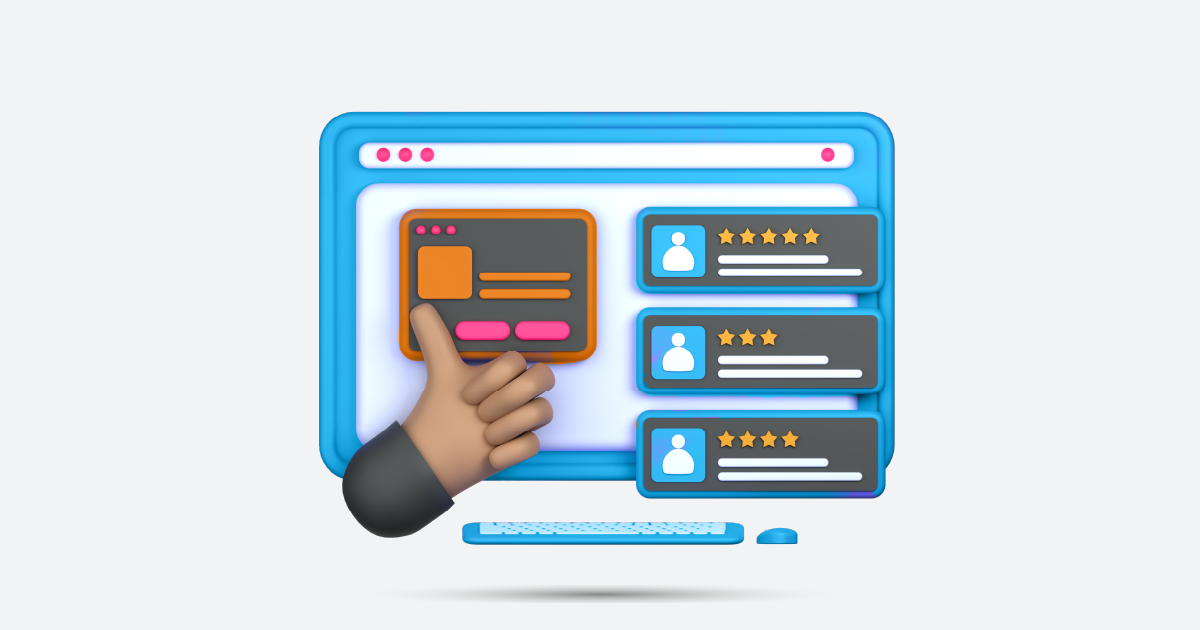In today’s fast-paced digital landscape, the voice of the customer has never been louder. But how do brands tune into this symphony of opinions, feedback, and trends? Enter social listening—a game-changing technique that allows companies to monitor, analyze, and respond to online conversations. Whether you’re a seasoned marketer or a curious business owner, mastering social listening techniques is crucial for staying ahead of the curve.
Social Listening Techniques: Unlocking the Secrets to Better Customer Engagement

What is Social Listening?
Social listening goes beyond merely monitoring what people are saying about your brand. It involves actively analyzing these conversations to gain insights into your audience’s needs, preferences, and pain points. Imagine being a fly on the wall in millions of conversations happening across the web—that’s the power of social listening.
The Importance of Social Listening in Modern Marketing
Why is social listening so vital? In a world where customer loyalty can change with a single tweet, understanding public sentiment is key to building lasting relationships. Social listening helps brands:
- Identify Trends: Stay ahead of the curve by spotting emerging trends early.
- Improve Customer Service: Quickly address customer concerns and improve satisfaction.
- Refine Marketing Strategies: Tailor campaigns based on real-time data and feedback.
How Social Listening Works
Understanding the mechanics of social listening techniques is essential for harnessing its full potential. It’s not just about collecting data; it’s about making sense of it.
Data Collection Methods
Social listening starts with data collection. Brands use various tools to gather mentions, comments, and reviews from social media platforms, blogs, forums, and more. These tools can track keywords, hashtags, brand mentions, and even competitor activities.
Analyzing Conversations and Sentiments
Once the data is collected, the next step is to analyze it. This involves understanding the context of conversations and the sentiments behind them. Is the overall tone positive, negative, or neutral? Sentiment analysis tools can help decipher the emotional undertones in customer feedback.
Turning Data into Actionable Insights
The final step is transforming raw data into actionable insights. What are your customers’ biggest concerns? Which products or services are they raving about? By answering these questions, you can make informed decisions that drive your business forward.
Key Social Listening Techniques
Now that we’ve covered the basics, let’s dive into the specific techniques that make social listening so powerful.
Keyword Monitoring
One of the simplest yet most effective techniques is keyword monitoring. By tracking specific words and phrases related to your brand, industry, or products, you can gauge public interest and identify potential opportunities.
Hashtag Tracking
Hashtags are the lifeblood of social media conversations. Monitoring popular hashtags in your industry can reveal trending topics and customer interests. It also helps you join relevant conversations and boost your brand’s visibility.
Brand Mentions Analysis
Knowing when and where your brand is mentioned online is crucial. Brand mention analysis allows you to track every time your brand is mentioned across various platforms. This helps you understand the public’s perception of your brand and respond quickly to any negative feedback.
Sentiment Analysis
Sentiment analysis takes brand mentions a step further by evaluating the tone of the conversations. Are people happy with your products? Are they frustrated with your customer service? Understanding sentiment allows you to address issues before they escalate.
Competitor Analysis
Social listening isn’t just about your brand; it’s also about your competitors. By analyzing what people are saying about your competitors, you can identify their strengths and weaknesses. This insight can inform your marketing strategy and help you gain a competitive edge.
Advanced Social Listening Strategies
As you become more comfortable with the basics, it’s time to explore advanced social listening strategies that can take your marketing efforts to the next level.
Predictive Analytics
Imagine knowing what your customers will want before they even realize it themselves. Predictive analytics, powered by social listening, allows you to forecast trends and customer behaviors. This can help you stay ahead of the competition and anticipate market shifts.
Crisis Management
In the age of social media, a crisis can erupt in a matter of minutes. Social listening enables you to detect early warning signs of a potential crisis. By addressing issues proactively, you can prevent a PR disaster and protect your brand’s reputation.
Influencer Identification
Influencers play a significant role in shaping public opinion. Social listening techniques can help you identify key influencers in your industry and forge partnerships with them. Collaborating with the right influencers can amplify your brand’s reach and credibility.
Trend Analysis
Trends can make or break a brand. By analyzing ongoing conversations, social listening helps you spot trends that align with your brand’s values and objectives. Whether it’s a new product idea or a marketing campaign, being on-trend can give you a competitive edge.
Social Listening Tools
With so many tools available, choosing the right one for your needs can be overwhelming. Here’s a quick guide to help you navigate the options.
Top Social Listening Tools
- AIM Insights: Offers a comprehensive suite of social listening features, including keyword tracking and sentiment analysis.
- Brandwatch: Known for its powerful analytics and ability to monitor a wide range of social media platforms.
- Sprout Social: Combines social listening with robust engagement and reporting tools.
How to Choose the Right Tool
When selecting a social listening tool, consider your specific needs and budget. Are you a small business looking for basic features, or a large enterprise in need of advanced analytics? The right tool should align with your goals and provide the insights you need to succeed.
Implementing Social Listening in Your Marketing Strategy
Social listening techniques is only effective when it’s integrated into your overall marketing strategy. Here’s how to do it.
Setting Clear Objectives
Before you start, define what you want to achieve with social listening. Are you looking to improve customer service, boost brand awareness, or drive sales? Clear objectives will guide your efforts and help you measure success.
Integrating Social Listening with Other Marketing Tactics
Social listening should complement your existing marketing tactics. Use the insights gained to inform your content strategy, advertising campaigns, and customer engagement efforts. For example, if social listening reveals that customers are interested in a particular product feature, highlight it in your next campaign.
Measuring Success and ROI
Finally, track the impact of your social listening efforts. Are you seeing an increase in customer satisfaction? Is your brand sentiment improving? Use key performance indicators (KPIs) to measure success and calculate the return on investment (ROI) of your social listening activities.
Challenges
While social listening offers many benefits, it’s not without challenges.
Data Overload
With so much data available, it can be overwhelming to sift through it all. The key is to focus on the metrics that matter most to your business and filter out the noise.
Privacy Concerns
As you gather data, it’s important to respect users’ privacy. Make sure you’re complying with data protection regulations and ethical standards.
Real-Time Response Challenges
Social listening is most effective when you can respond in real time. However, this requires a dedicated team and resources, which can be a challenge for smaller businesses.
Future Trends
As technology evolves, so does the field of social listening. Here’s what the future holds.
AI and Machine Learning in Social Listening
Artificial intelligence (AI) and machine learning are transforming social listening by automating data analysis and providing deeper insights. These technologies can help you predict customer behavior and tailor your marketing strategies accordingly.
The Role of Social Listening in Customer Experience
As customer experience becomes a key differentiator, social listening will play an even bigger role. By understanding your customers’ needs and preferences, you can deliver personalized experiences that build loyalty and trust.
Case Studies
Social listening isn’t just a buzzword—it’s a strategy that drives real, tangible results for businesses. Here are a few compelling case studies that demonstrate how effective social listening can be in elevating brands, improving customer engagement, and breaking records.
1. Nike’s “Just Do It” Campaign Boosts Brand Sentiment
- Challenge: Nike wanted to boost sentiment around its iconic “Just Do It” slogan and understand how their customers felt about the brand in the context of their latest campaign. They used social listening tools to track conversations surrounding their advertisements and celebrity endorsements, including the partnership with Colin Kaepernick.
- Solution: Through social listening, Nike was able to monitor public reactions and sentiment in real-time. They observed strong emotional engagement and used the insights to fine-tune their messaging. The data revealed that while there was some controversy, the brand’s alignment with social justice sparked a positive response among their core audience.
- Result: Nike saw a 31% increase in online sales within a few days of the campaign launch, and brand sentiment soared, surpassing any negative mentions.
Quote from Influencer:
“Nike didn’t just tap into a trend—they created one. Social listening empowered them to understand their audience and fuel a movement.”
— @GaryVee (Gary Vaynerchuk), Entrepreneur and Social Media Expert
2. Coca-Cola’s “Share a Coke” Campaign—Personalizing Customer Engagement
- Challenge: Coca-Cola wanted to increase engagement among younger customers and boost brand loyalty. They realized that personalization was the key to creating more meaningful connections with their audience, but they needed to figure out exactly how to personalize on a mass scale.
- Solution: By using social listening tools, Coca-Cola identified conversations where customers were expressing a desire for personalized experiences. They then launched the “Share a Coke” campaign, where bottles featured common first names instead of the Coca-Cola logo.
- Result: Coca-Cola saw a 7% increase in consumption among teens and young adults, and engagement on social media grew by over 870%. The hashtag #ShareACoke went viral, with millions of user-generated posts.
Tweet from Influencer:
“Coca-Cola’s #ShareACoke was pure genius. Social listening gave them the insight they needed to make their brand feel personal again.”
— @AnnHandley, Marketing Pioneer and Author
3. Lush Cosmetics—Listening to Customers to Drive Product Innovation
- Challenge: Lush Cosmetics wanted to expand their product offerings based on customer demand. They wanted to gain insights into consumer preferences without solely relying on market research and surveys.
- Solution: By using social listening tools, Lush tracked conversations around beauty and skincare trends and gathered feedback about their existing products. They quickly identified growing demand for sustainable, cruelty-free products, particularly in the bath and body category.
- Result: Lush introduced a new line of environmentally friendly products, including packaging-free bath bombs, which quickly became bestsellers. Sales in the category increased by 25% in the first quarter after launch.
Quote from Influencer:
“When brands listen to their customers—really listen—they can create products that resonate on a personal level. Lush is a perfect example of this.”
— @MariSmith, Social Media Strategist
4. Netflix’s Real-Time Content Adjustments Using Social Listening
- Challenge: Netflix faces intense competition in the streaming industry and needed a way to quickly gauge audience reactions to their content offerings. They wanted to stay ahead of emerging trends in real-time.
- Solution: Netflix implemented advanced social listening strategies to track real-time feedback on their newly released shows. They used sentiment analysis to determine which shows were gaining traction and which were being negatively received, allowing them to make immediate content adjustments and promotional decisions.
- Result: In one instance, Netflix’s rapid response to fan criticism of a new show led to a 50% increase in viewers for its second season. By tapping into ongoing conversations, they were able to refine their content strategy, maintain their edge, and strengthen viewer loyalty.
Tweet from Influencer:
“Netflix’s success isn’t just about content; it’s about the right content. Social listening lets them know what’s next before we do.”
— @BrianSolis, Digital Analyst and Author
5. L’Oréal’s Crisis Management and Real-Time Reputation Management
- Challenge: L’Oréal faced a public relations issue after a controversial ad campaign sparked backlash on social media. They needed to monitor and address customer concerns immediately to prevent further damage to their brand reputation.
- Solution: The company utilized social listening to detect negative sentiment in real-time, especially in key markets where the backlash was strongest. They quickly crafted personalized responses, clarified their brand message, and even issued a public apology through social media channels. By engaging directly with their audience, L’Oréal was able to mitigate the situation and restore trust.
- Result: L’Oréal’s quick response turned the crisis into an opportunity for brand improvement. Social listening not only helped them address immediate issues but also helped shape their long-term strategy for social responsibility. Their reputation recovered, and sales in affected regions grew by 15% in the subsequent quarter.
Tweet from Influencer:
“When a crisis hits, the brands who listen and respond with empathy win. L’Oréal turned a potential disaster into a win for their customers and their bottom line.”
— @JayBaer, Customer Experience Expert
Key Takeaways from These Case Studies
- Real-Time Insights Matter: From trendspotting to crisis management, social listening enables brands to respond swiftly to emerging issues or opportunities. Nike’s “Just Do It” campaign and Netflix’s real-time content adjustments are perfect examples of how brands can stay agile and ahead of the curve.
- Personalization Drives Engagement: Coca-Cola’s #ShareACoke campaign and Lush’s product innovations demonstrate the power of listening to your customers and using those insights to create deeply personal, resonant experiences.
- Crisis Management Can Be Transformed: L’Oréal’s proactive response to a PR crisis shows that when brands monitor their online presence, they can turn negative situations into opportunities for customer connection and growth.
Conclusion
In the ever-evolving world of digital marketing, social listening is no longer optional—it’s essential. By mastering the techniques and strategies outlined in this guide, you can turn online conversations into valuable insights that drive your brand’s success. Whether you’re just starting or looking to refine your existing efforts, social listening offers endless possibilities for growth and innovation.
Ready to take your social listening strategy to the next level? Request a demo from AIM Technologies today and see how our cutting-edge tools can help you transform insights into action.
FAQs
What is the difference between social listening and social monitoring?
- Social listening involves analyzing online conversations to gain insights, while social monitoring focuses on tracking mentions and responding to them.
How can small businesses benefit from social listening?
- Small businesses can use social listening to understand customer needs, identify trends, and improve their marketing strategies.
What are the common mistakes to avoid in social listening?
- Avoid focusing solely on positive or negative comments, neglecting competitors, and failing to act on the insights gathered.
How often should you perform social listening?
- Regular social listening is recommended, with ongoing monitoring and periodic deep dives into data to stay informed about trends.
Can social listening predict future trends?
- Yes, by analyzing patterns in online conversations, social listening can help predict emerging trends and shifts in consumer behavior.




